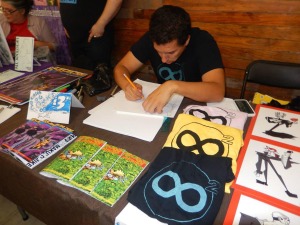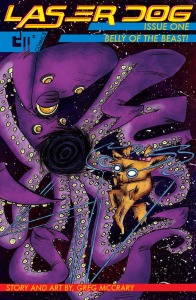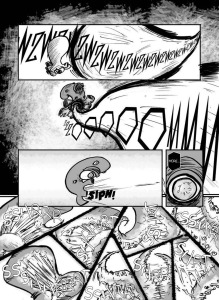(Christopher Mills/Peter Grau/Nick Poliwko; 44 pages; ATOMIC ACTION COMICS/ATOMIC PULP MEDIA; 2019)
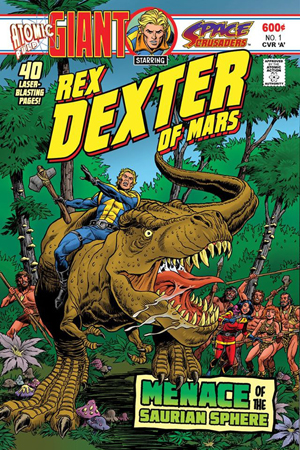
Like a lot of people of a certain age, I sometimes pine for the “good old days,” a nostalgia trip down memory lane of all the things that I loved (or missed) over the first (REDACTED) decades of my life. Writer/letterer/publisher Christopher Mills is one of us, too. And, thankfully, he has put his money where his mouth is and done something to sate his desire for a return to a time when comic books weren’t so dark and serious. In this case, the 1970s. The books back then had a certain look and style that you just don’t see anymore. Mills’ Atomic Action Comics has mined the field of minor (VERY minor) Golden Age characters from some low level publishers, put a Silver Age shine on ‘em and reintroduced ‘em in the Modern Era to people who didn’t even know they existed. And therein lies the fun.
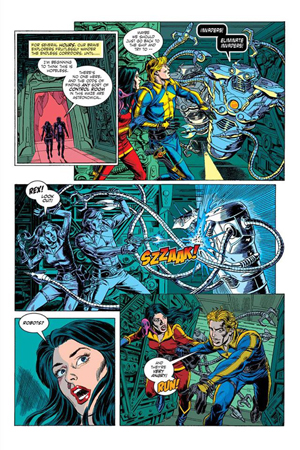
The first issue of SPACE CRUSADERS stars a dude named Rex Dexter of Mars, a hero in the mold of Flash Gordon or Buck Rogers, with this updated version exhibiting the dark humor and rather glib repartee of Han Solo. The character was created by Dick Briefer, debuting in the first issue of MYSTERY MEN COMICS, published by Fox Feature Syndicate and cover-dated August, 1939. The series inhabited the back-pages of the first 24 issues of the book, as well as a 1940 single issue of his own title, the only time Rex appeared on a cover. In “Menace of the Saurian Sphere!,” Mills’ story is fun and exciting, an adventure that sees Rex and his traveling companion aboard the Blue Comet, Cynde, pick up a tiny Kooba Cola-drinking space octopus that Captain Dexter calls a “goblin,” are attacked by robot antibodies inside the massive sphere that gives the story its name before escaping through a hatch that leads to… a prehistoric land populated with cavemen and dinosaurs; when the duo come face-to-face with an angry T Rex, Cynde exclaims, “Amazing! A living Tyrannosaurus Rex!” To which the nimble-brained Dexter says, “Wait! HIS name is Rex, too?” Brilliant! The cavemen save Rex and Cynde from the dinosaur, only to be saved by the Captain when the injured beast turns his attention toward the tribesmen. Aaand… then things get interesting. This story is a total 1970s throwback, a freewheeling, wild and woolly 28 pages that leaves you wanting more! And, I haven’t even told you about the art yet.

The pencil and ink work by Peter Grau reminds me of a looser version of Dick Giordano (I always thought that Dick’s solo work had a rather wooden feel), while Matt Webb’s colors add to the Silver Age feel of the book; it’s brighter and as close to those old comics as anything I’ve seen outside of stuff like the MY LITTLE PONY books or the ones starring ancient Harvey characters like CASPER, THE FRIENDLY GHOST and BABY HUEY. The Grau/Webb combination is certainly a thing of beauty… futuristic settings, robotic adversaries, beautiful women, raging dinosaurs, cute alien pets, a hapless hero, these guys can do it all! The same creative team returns for SPACE CRUSADERS 2, but Rex Dexter doesn’t. As Mills discusses in this first issue, his vision for this book is to feature a different Golden Age character/strip in each issue. The featured character in number two, as alluded to in Rex’s story, is Basil Wolverton’s Spacehawk, the Lone Wolf of the Void. The cool thing about Mister Grau’s work is that he modifies his style to evoke the source material; with Spacehawk, he recalls Wolverton’s off-the-wall aliens and monsters, while the main characters bring to mind late-’60s and early-’70s Jack Kirby. Understand, though… his pages are not straight copies of the old masters; just think of them as more of an homage.
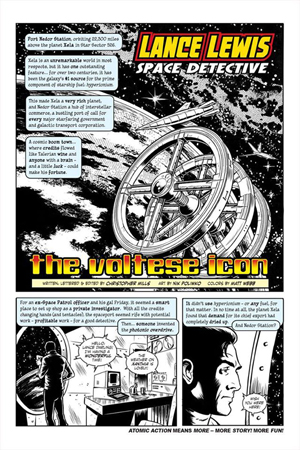
Apparently, the only constant here (aside from the fun stories and great artwork) is the back-up feature, Lance Lewis, Space Detective, an oddly appealing concept that debuted in MYSTERY COMICS #3 from Nedor Comics in 1944. While there’s no information about the creators behind the series, at various points in the its four year run, Graham Ingels and Bob Oksner was responsible for the art. “The Voltese Icon” is the first of what will be at least a three-part saga, by Mills and Webb with art by Nik Poliwko. Like Grau, Poliwko’s work is a throwback to the Silver-Age greats… in this case, it’s kinda somewhere between Al Williamson, Grey Morrow, Wally Wood and Berni Wrightson. In other words… Awesome! The name and the plot are obviously take-offs of Dashiell Hammett’s novel, THE MALTESE FALCON, but with mind transference. Like all good multi-part comic stories, the cliff-hanger ending has you counting the days until the next installment.
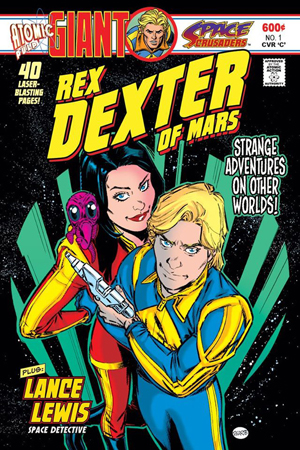
SPACE CRUSADERS and all Atomic Action comics are only available from atomicactioncomics.com, printed on demand and shipped by IndyPlanet. They’re a bit more expensive than regular books, but the detail to quality is well worth it.

